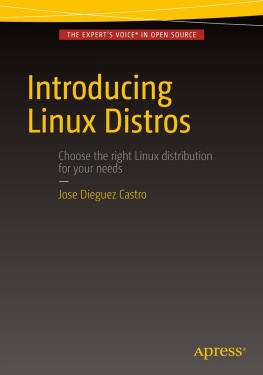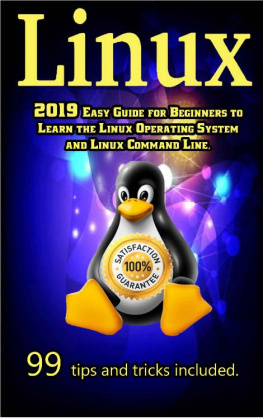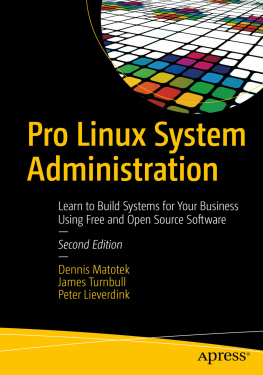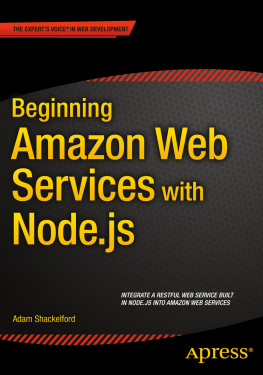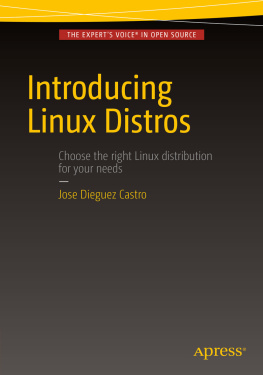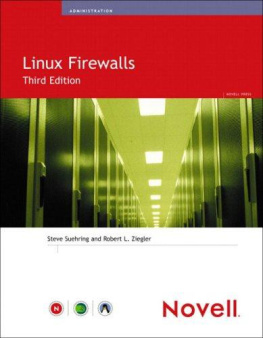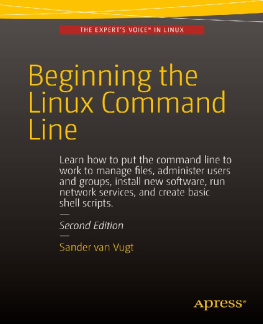Jose Dieguez Castro - Introducing linux distros: choose the right Linux distribution for yout needs
Here you can read online Jose Dieguez Castro - Introducing linux distros: choose the right Linux distribution for yout needs full text of the book (entire story) in english for free. Download pdf and epub, get meaning, cover and reviews about this ebook. year: 2016, publisher: Apress, Berkeley, CA, genre: Romance novel. Description of the work, (preface) as well as reviews are available. Best literature library LitArk.com created for fans of good reading and offers a wide selection of genres:
Romance novel
Science fiction
Adventure
Detective
Science
History
Home and family
Prose
Art
Politics
Computer
Non-fiction
Religion
Business
Children
Humor
Choose a favorite category and find really read worthwhile books. Enjoy immersion in the world of imagination, feel the emotions of the characters or learn something new for yourself, make an fascinating discovery.
- Book:Introducing linux distros: choose the right Linux distribution for yout needs
- Author:
- Publisher:Apress, Berkeley, CA
- Genre:
- Year:2016
- Rating:3 / 5
- Favourites:Add to favourites
- Your mark:
- 60
- 1
- 2
- 3
- 4
- 5
Introducing linux distros: choose the right Linux distribution for yout needs: summary, description and annotation
We offer to read an annotation, description, summary or preface (depends on what the author of the book "Introducing linux distros: choose the right Linux distribution for yout needs" wrote himself). If you haven't found the necessary information about the book — write in the comments, we will try to find it.
Introducing linux distros: choose the right Linux distribution for yout needs — read online for free the complete book (whole text) full work
Below is the text of the book, divided by pages. System saving the place of the last page read, allows you to conveniently read the book "Introducing linux distros: choose the right Linux distribution for yout needs" online for free, without having to search again every time where you left off. Put a bookmark, and you can go to the page where you finished reading at any time.
Font size:
Interval:
Bookmark:
Linux Distros
- One way to choose a Linux distro is to follow the advice of a colleague, the recommendation of a professional, a review that you find on the Internet, a random choice, or because it is the only version you know about at the moment. If the experience is pleasant, you may wind up using that distro for a long time.
- Sometimes the experience of choosing a Linux distro is not pleasant at all. The problem could be the installation process, the desktop environment, the terminal, or the user documentation. Any of these issues might make a particular distro not right for you. From there, the process could follow one of these common paths :
- You become angry and disappointed, so you give up on using this OS, possibly forever, or at least for a long time. You may take to the Internet to criticize the Linux distro that you tried, and you may warn your colleagues against it. Unfortunately, you might have turned into a long-term Linux user if you had only chosen the right distro at the start.
- Lets say that you decide to try another Linux distro. After a few tests, you find the one that seems to address your expectations. You turn into a long-term, happy user of that particular distro, and you do not hesitate to test other ones.
- Alternatively, you try several distros, maybe even a lot of them, but you never find the one with which you feel comfortable. The problem could be that you havent defined your needs or wants specifically enough, and so you havent discovered which distros can cover these needs and in which manner. You may end up as a long-term, not-so-happy Linux user, or you may switch to another OS completely.
- Finally, you may be someone who thoroughly enjoys testing new Linux distros. You may use one Linux distro on a regular basis, but test new ones on a different machine or VM, or you may switch Linux distros every few months or every few years. You are probably a long-term Linux user.
Font size:
Interval:
Bookmark:
Similar books «Introducing linux distros: choose the right Linux distribution for yout needs»
Look at similar books to Introducing linux distros: choose the right Linux distribution for yout needs. We have selected literature similar in name and meaning in the hope of providing readers with more options to find new, interesting, not yet read works.
Discussion, reviews of the book Introducing linux distros: choose the right Linux distribution for yout needs and just readers' own opinions. Leave your comments, write what you think about the work, its meaning or the main characters. Specify what exactly you liked and what you didn't like, and why you think so.

